Roadmap
Demand map
Resources
Community Efforts
An initiative to achieve universal energy access in Sabah through renewable mini-grids.
We visited and surveyed 206 unelectrified communities to understand their energy needs and aspirations.
400
206
57
Communities want reliable, quality energy supply for productive use and improved services from village clinics and schools.
56%
30%
9%
Communities want reliable, quality energy supply for productive use and improved services from village clinics and schools.
Energy Demand Map
The SabahRE2 team mapped 400 unelectrified villages in rural Sabah – a result of overlaying a wealth of data from government agencies, district offices, community networks, satellite imagery, and field visits to over 200 communities.
View Demand Mapour StudiesDeveloping the delivery ecosystem
SabahRE2 details this proposed pathway, including enabling policies, regulatory and quality assurance framework, financial modelling, training, and delivery model and ecosystem.
read the reportMini-Grids as the solution
A mini-grid is small-scale, often stand-alone system that generates electricity which is distributed to a limited number of consumers via a distribution grid.
“Mini-grids are the only tools in the off-grid energy access repertoire that offer a level of productive power for energy-intensive income generating activities.” (UNEP)
In one 11.6kW micro-hydro project for a 54-household village, the community gained
- 50% energy cost savings
- 2-3X increased income
- 1,379 acres of rainforest protected
- 30,000 liters of fuel use on diesel generators diverted


Sabah RE2 Pilot Updates
Solar-Hydro Hybrid Mini-Grid in Kg. Walou 2025
The renewable energy upgrade in Kg Walou, a remote Dusun village located 80km from Ranau, has been successfully completed in 2025 under the Sabah Renewable Energy Rural Electrification Roadmap (Sabah RE2) initiative. Previously powered by a 3kW pico-hydro system installed in 2019 by Penampang Renewable Energy Sdn Bhd, the village faced frequent energy shortages, especially during the dry season.To address the growing demand and seasonal reliability issues, the system has been upgraded with a 20kWp solar PV array and a 40 kWh lithium iron phosphate (LiFePO₄) battery bank, forming a solar-hydro hybrid mini-grid solution. This integrated system ensures stable electricity supply for households currently being rebuilt following disruptions caused by road construction to SK Ponulangon. As part of the broader community development vision, a Community Development Centre (CDC) has also been established. Equipped with Starlink internet access, the CDC will host a local café offering connectivity to residents while allowing TONIBUNG to remotely monitor the mini-grid. This centre will serve as a platform to incubate rural social enterprises and promote a self-sustaining village economy (ekonomi desa).The Kg Walou hybrid mini-grid exemplifies community-led clean energy solutions that support energy resilience, digital inclusion, and sustainable rural livelihoods.
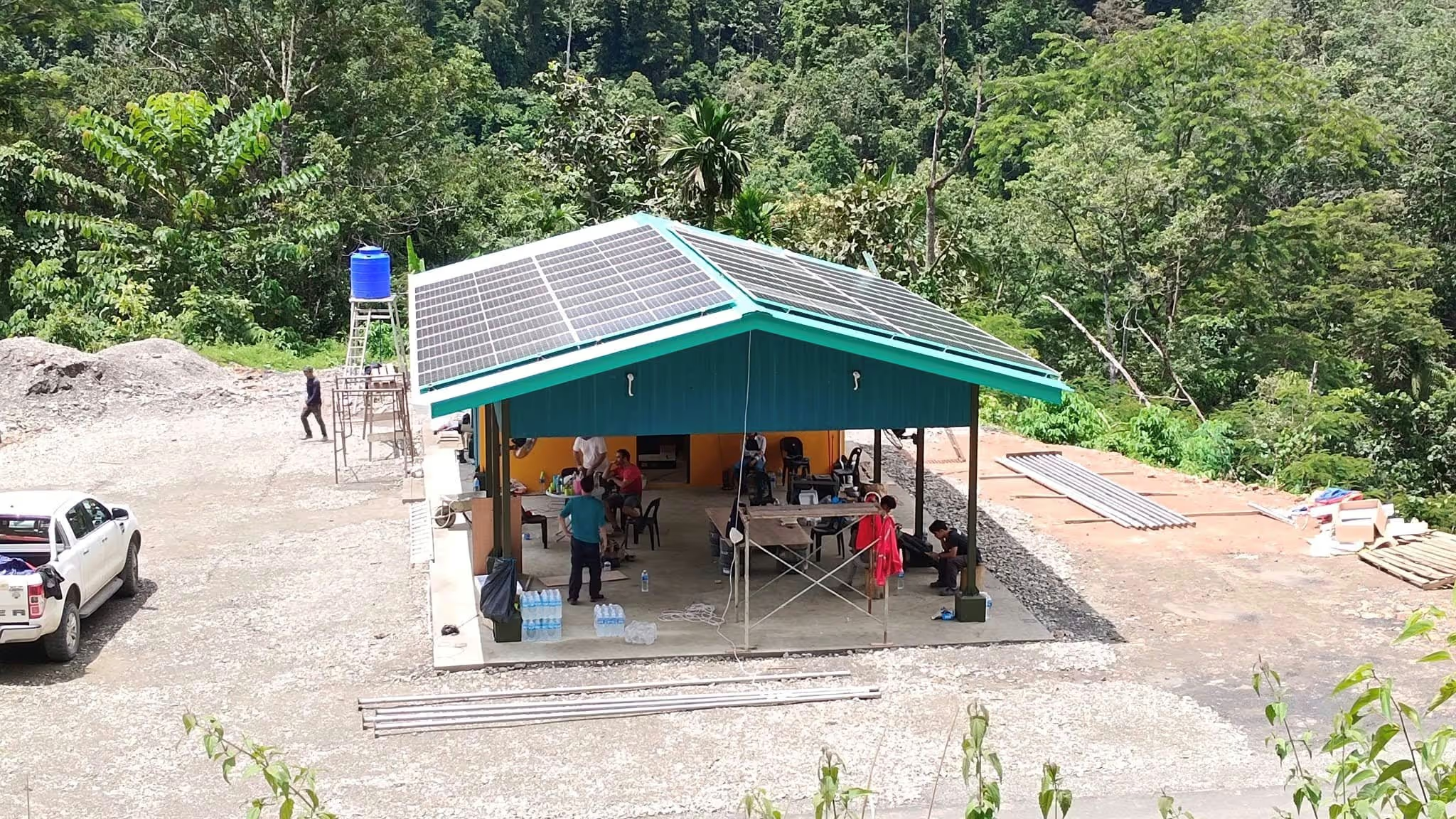
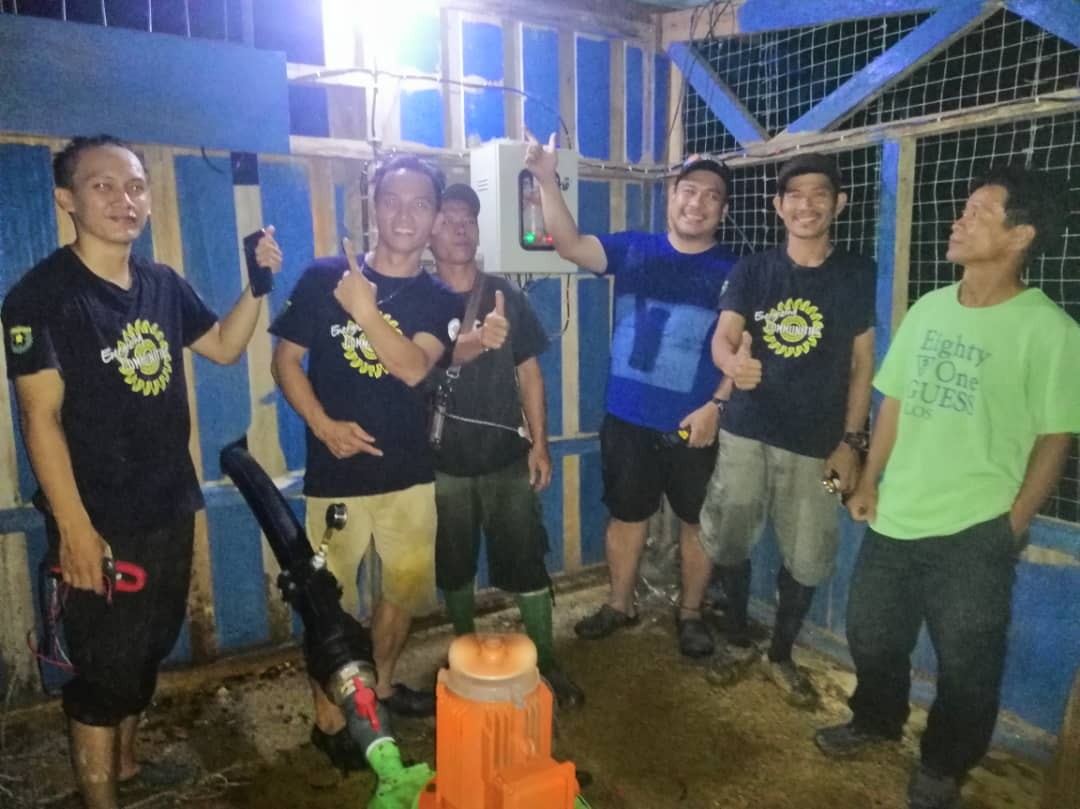
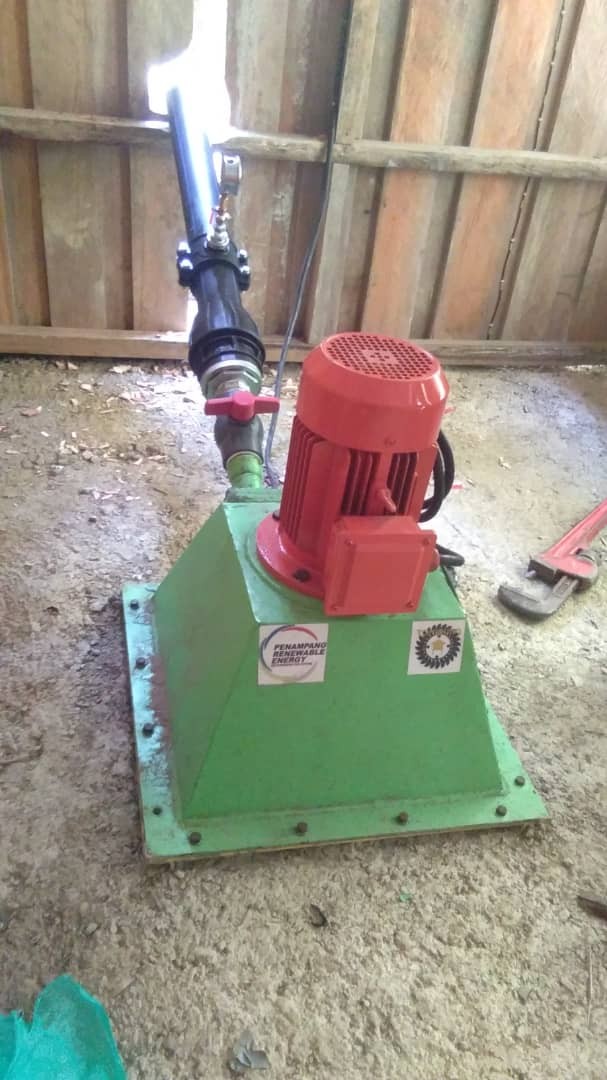
Solar-Hydro Hybrid Mini-Grid in Kg. Terian 2025
Kampung Terian’s micro hydro system was constructed in 2004. After 20 years of operations, the system has shown ageing in its infrastructure and the community has expanded significantly over the years so the system is no longer able to cater for the community’s demand for energy. A land slide that happened in 2022 crippled the system and was beyond the capability of the community to repair. Repair works were proposed. In early July 2025, during site assessment and discussion with the community, a new issue was raised mainly related to the current condition of the Bunsadan River where the system was located. The current prolonged dry spell caused by the El Niño phenomenon, the river has dried up raising the alarm that a micro hydro could no longer operate as stand-alone system. A hybrid system was designed as it addresses the increased demand for energy from the community.
Proposed Intervention
1. The existing Micro Hydro thatwas built on Bunsadan River can no longer cater for the energy demand by the village. The situation is much more critical during dry season when the river’sflow is reduced. Once upgraded, the micro hydro-solar PV hybrid system will have a combined 10 kW power output and will still have a capacity of 5 kWp during dry season, when normally the system would be shut down because of low water flow.
2. The solar PV system will be combined with the existing micro hydro generator to supply the whole village though the mini grid system.
3. The solar hydro hybrid system will see integration of two different renewable energy systems into one. The integration itself is an innovation to increase the capacity of the renewable energy mini grid. The integration makes so much sense when dealing with limited flow during the dry season and limited solar radiation during the rainy season.The single line diagram of the proposed system as follows:
The AC power generated from the 5 kW micro hydro will be transmitted using existing transmission lines to the Community SE Centre where the solar array will be located. The AC power will then be converted to DC power to be stored to batteries or directly fed to loads. Meanwhile the 5 kWp solar panels will also charge the batteries during daytime and hybrid inverters will convert DC power stored in the batteries to AC power that is delivered to the community through the mini grid system.
The Kg Terian mini grid system was installed in 2025 and is now operated and managed by the community.
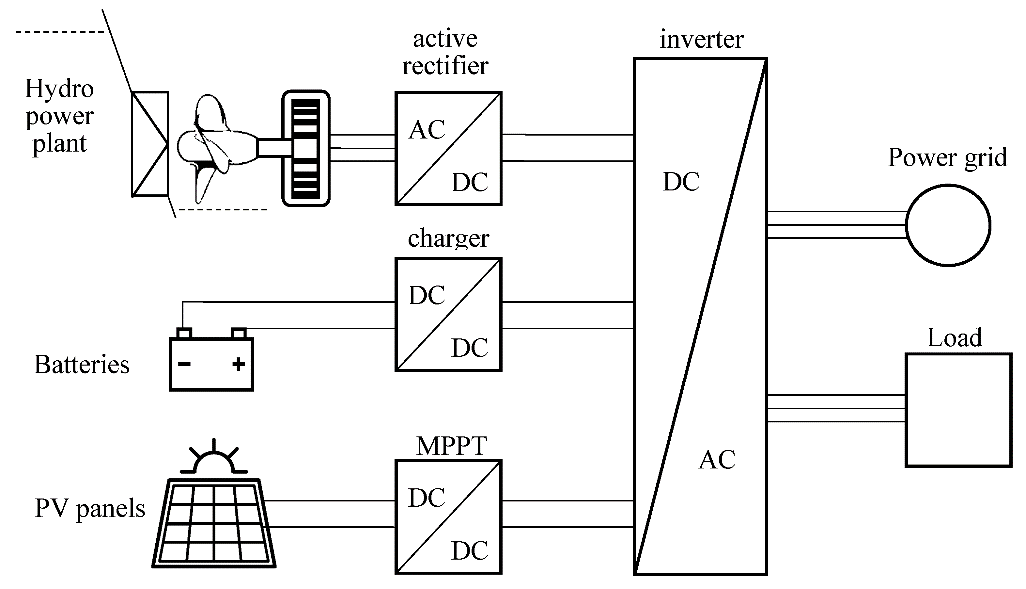
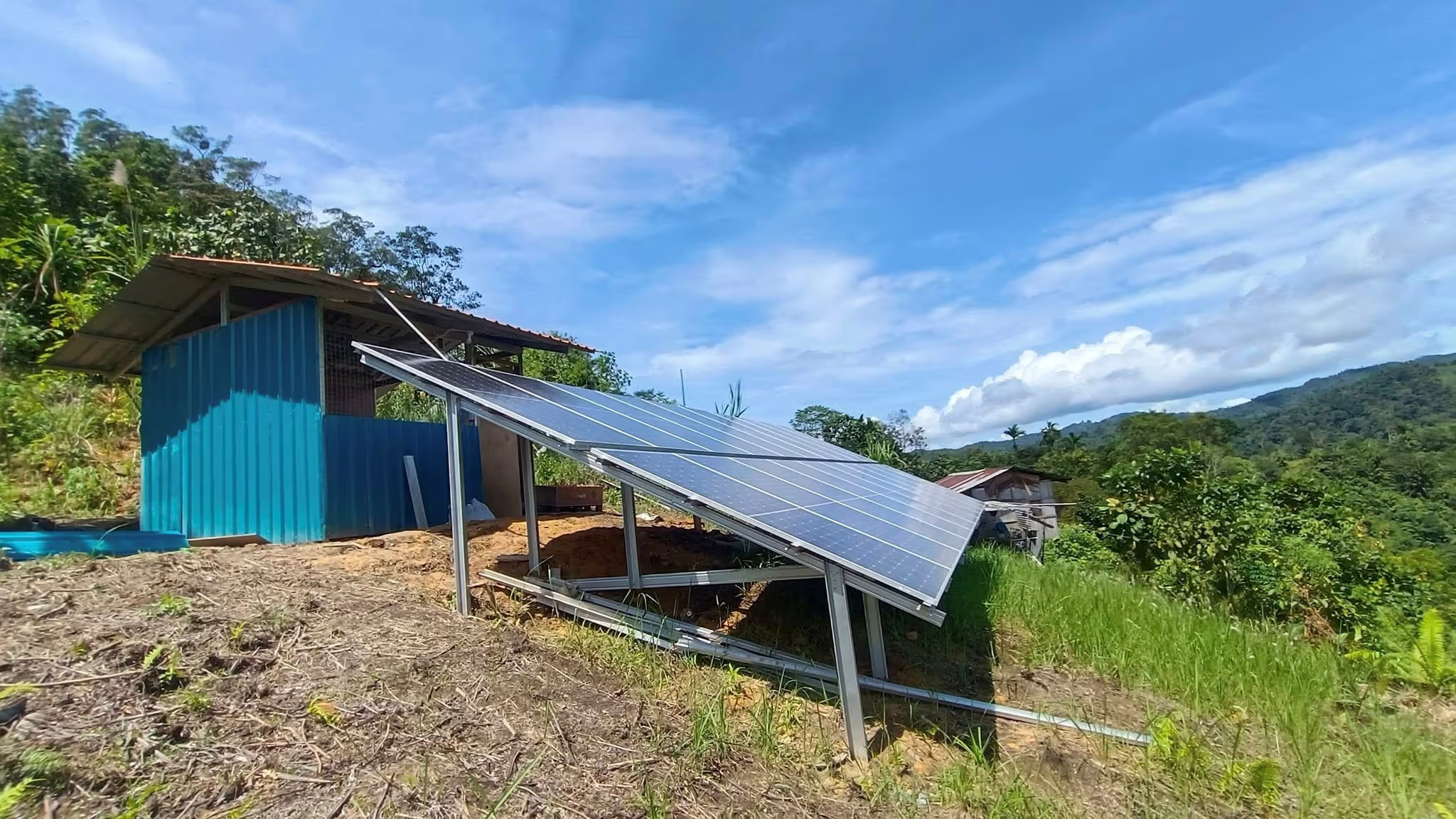
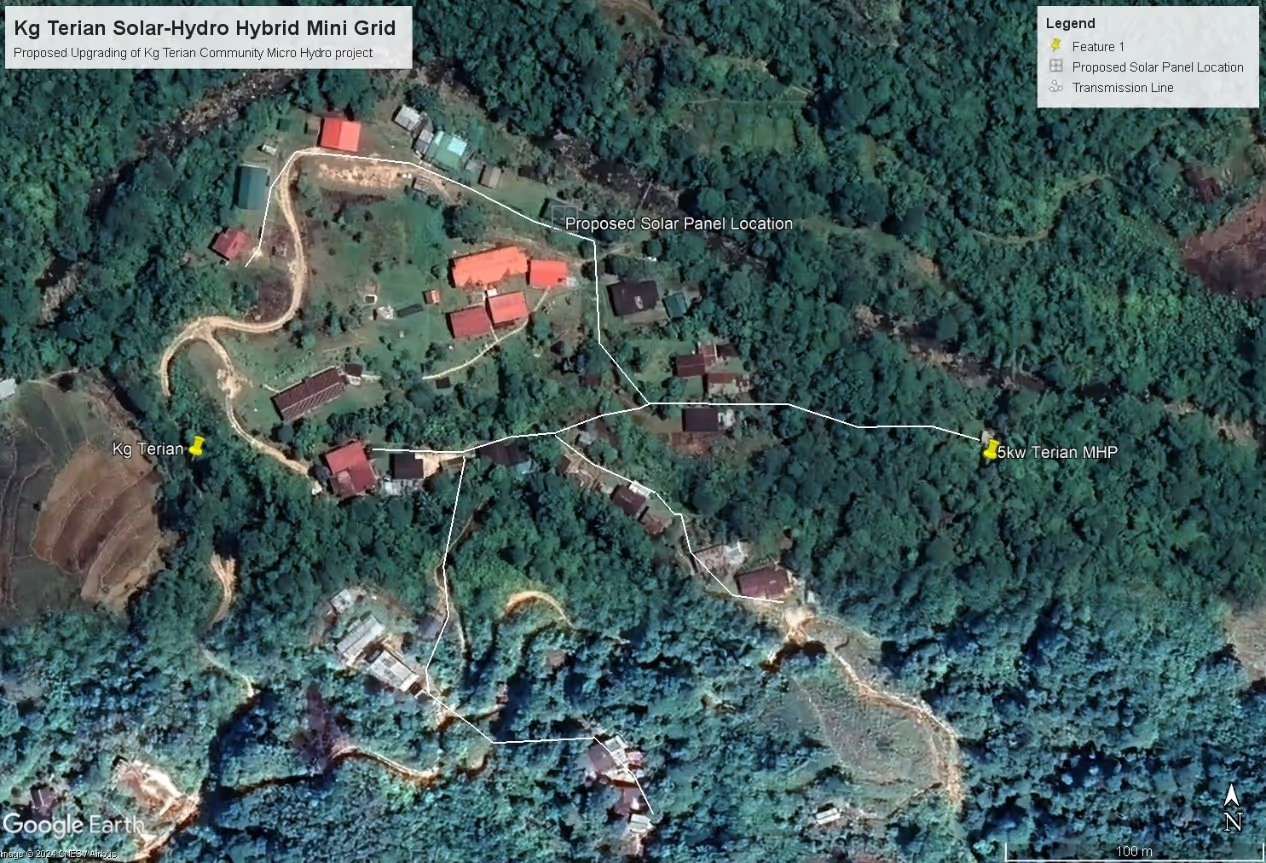
Kg. Timpayasah Solar PV Micro Grid 2024
Kampung Timpayasah faces acute energy challenges, with high reliance on costly and polluting sources like diesel generators. The community has demonstrated strong interest and readiness to adopt a sustainable energy solution, as evident from its past engagement with micro-hydro initiatives. The mini grid system was installed and commissioned in 2024.
Alignment with Sabah’s Strategic Goals
The project directly supports the goals of the Sabah RE2 Roadmap, particularly in promoting renewable energy, advancing socio-economic development, and fostering equity among Indigenous communities.
Environmental and Cultural Context
The community’s proximity to important watershed areas and its traditional tagal system for river management make it an ideal candidate for an integrated energy-environmental approach. The project will enhance both energy access and conservation, creating a balanced development model.
System design background
Kampung Timpayasah is transitioning from an outdated energy system to a solar mini-grid, addressing its long-standing energy challenges. This new system with 5 kW solar PV will ensure a reliable and sustainable energy supply. The project incorporates socio-economic development through construction of a SocioEconomy Centre that doubles as a solar powered Socio-Economic (SE) Development Centre, which will support productive use of energy (PUE) initiatives.
3. Objectives·
Energy Access and Sustainability
To Construct a 5 kW capable of generating 80kwh a day to supply energy to 12 households and support socio economic development activities. This will reduce reliance on diesel and other polluting energy sources.·
Socio-Economic Empowerment
To Renovate the community hall into an SE Development Centre, supporting entrepreneurship and energy-enabled activities. The SE Centre will implement training programs to enable women and youth to engage in productive end-use activities.·
Environmental and Resource Management
To enhance watershed management, including the Tagal System, to sustain water resources for micro-hydro generation. Promote environmental conservation as part of a low-carbon development model.
4. Project Components
a) Renewable Energy Mini-Grid System
Installing a 5 kWp solar PV system with battery storage to meet peak demand and provide backup energy on the Renewable Energy Micro Grid.
b) Socio-Economic Development Centre
Build a community hall to mount the solar panels while the rest of the building to be used as a hub for PUE programs, including Local handicrafts production, Agri-business initiatives (e.g., food processing) and Skillstraining and workshops for women and youth.
c) Environmental Conservation and Watershed Management
To protect 15 hectares of watershed areas to ensure sustainable water flow for the pico-hydro system while expanding the Tagal conservation zone to support aquatic ecosystem recovery.
d) Capacity Building
To train at least 20 community members in managing the hybrid system and conducting PUE activities. To establish a Community Energy Management Committee (CEMC) to oversee system operations and SE programs.
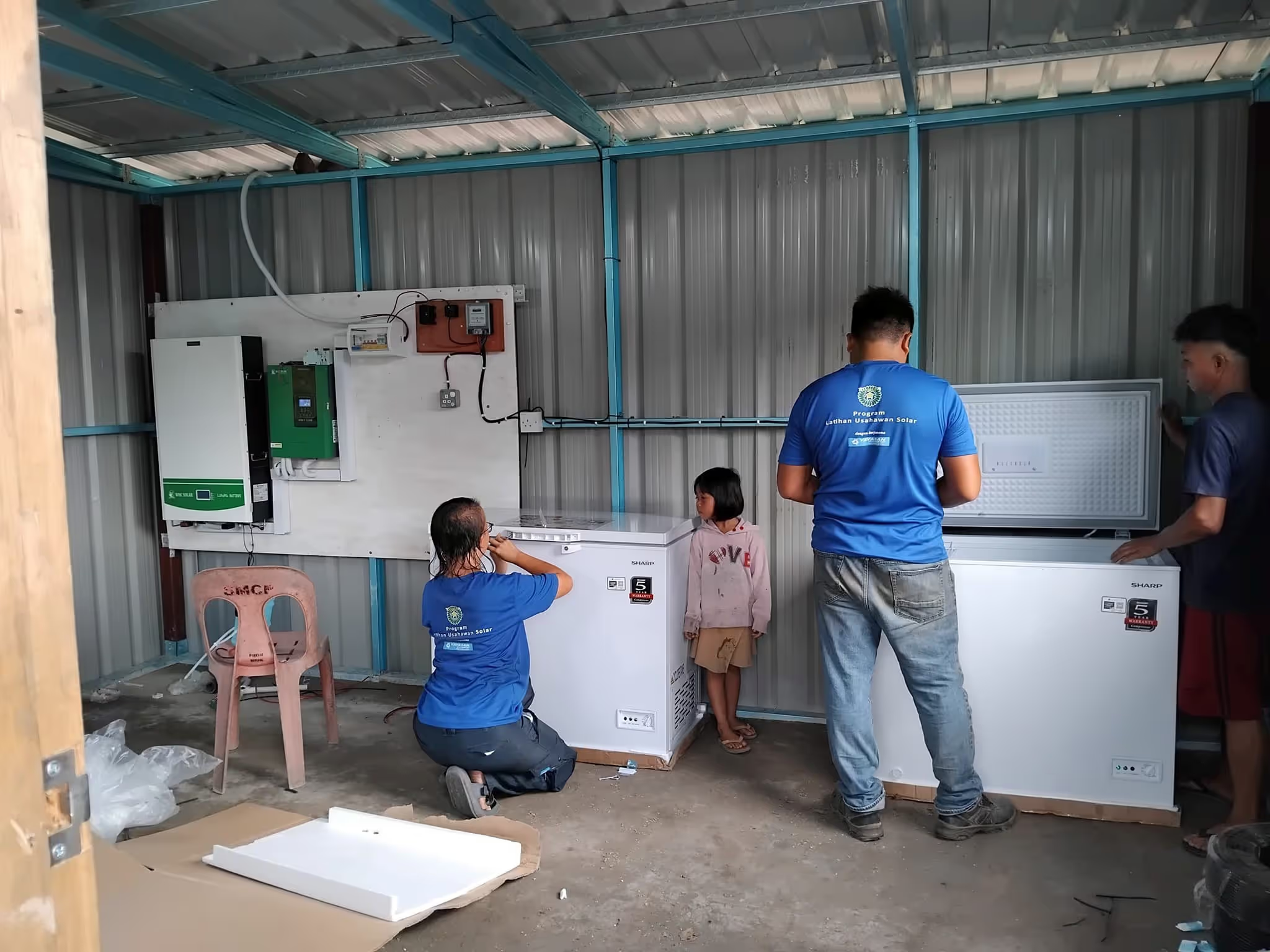
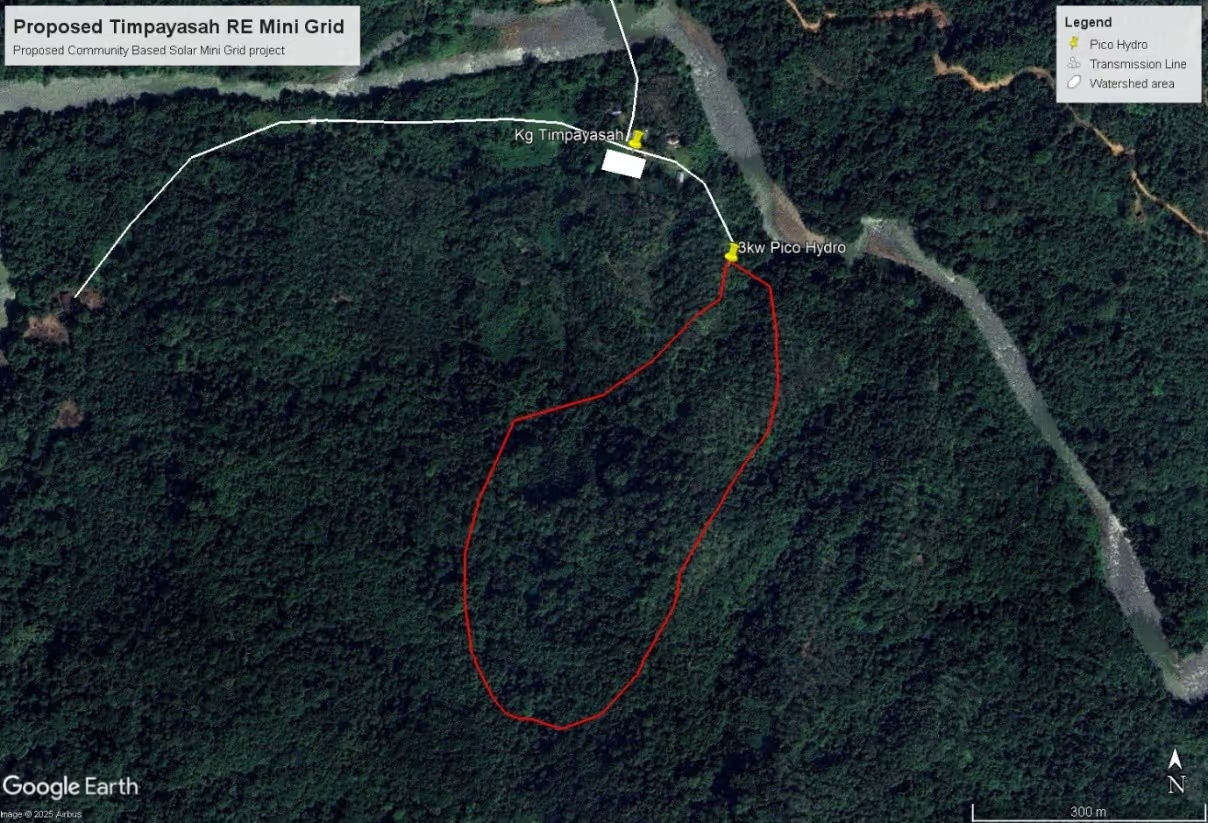

Solar PV-Battery Mini-Grids at the Villages of Dagat and Pitas Laut 2025
To date, five renewable energy mini-grids have been installed in five of the villages included in the Sabah RE2 Roadmap.Two systems are located in the fishing villages of Pitas Laut and Dagat, benefitting 64 households (total population 400) and 80 fishermen within the Kinabatangan District. These solar PV-battery mini-grid systems have generation capacities ranging from 30 kW (Dagat) to 40 kW (Pitas Laut), providing sufficient power to meet the communities’ energy aspirations and supporting diverse household needs as well as productive end uses, such as provision ofice to fishermen and seafood processing.The shift away from costly diesel generators and the availability of reliable, high quality, affordable electric service offers transformational potential for community-led conservation and economic development efforts, supporting increased resilience of traditional livelihoods and allowing community members to develop new businesses and services for the community. Per data from the women-led social enterprise in Dagat village installation of off-grid solar PV and battery storage is expected to enable the village to meet its target annual production of 30 tonnes of ice, reduce spoilage and delivery costs and meet the cold storage needs of all the village’s fishermen, once the upgrade from a 5.4 kW to a 30 kW PV system is completed and the new system is commissioned by August 2025. Last year, the women’s group sold 19 tonnes of ice and generated sales of RM 16,436 while operating costs were RM 3,890. RM 10,280 was generated as income for 16 women. These projects were supported by the United Nations Development Programme (UNDP) Malaysia, EKO Energy and Seacology and implemented by members of the Sabah RE2 Consortium.
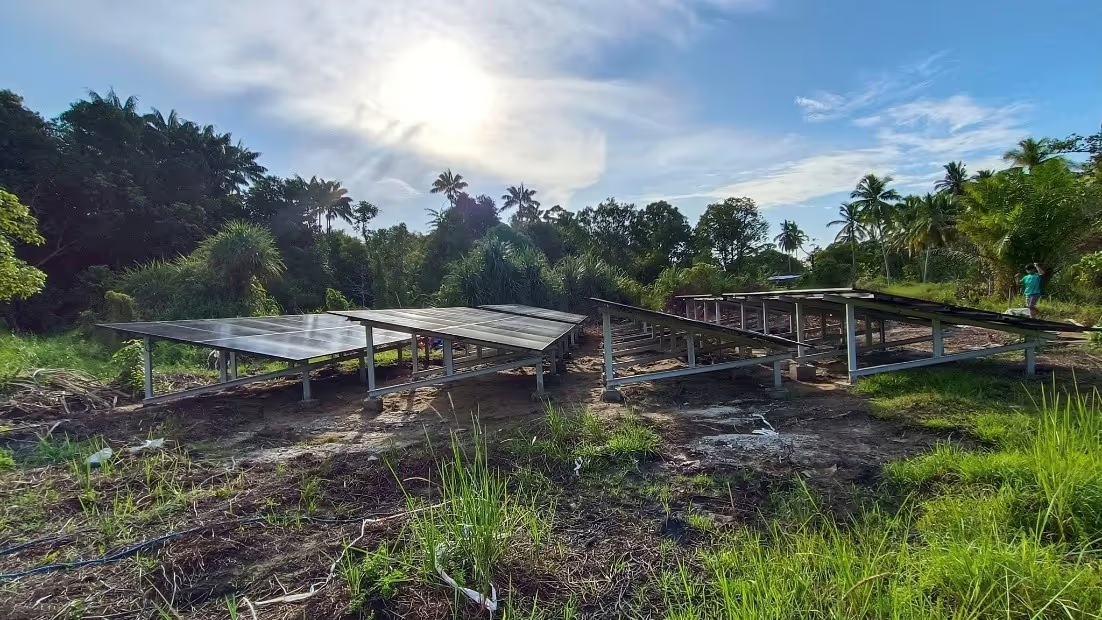
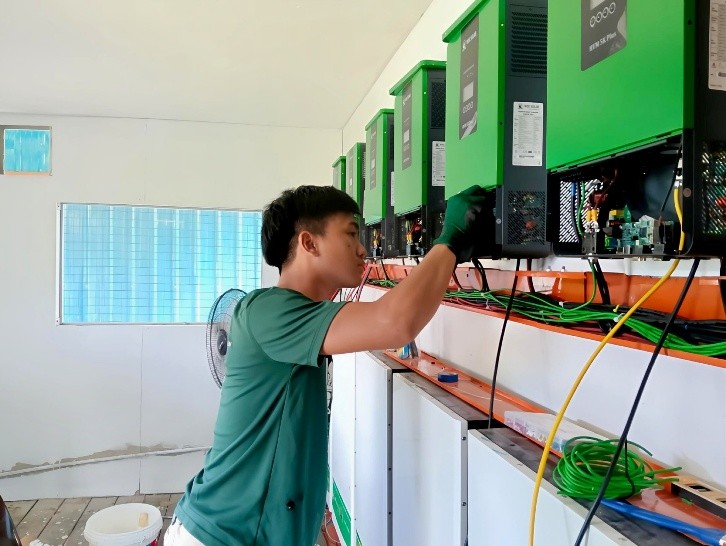
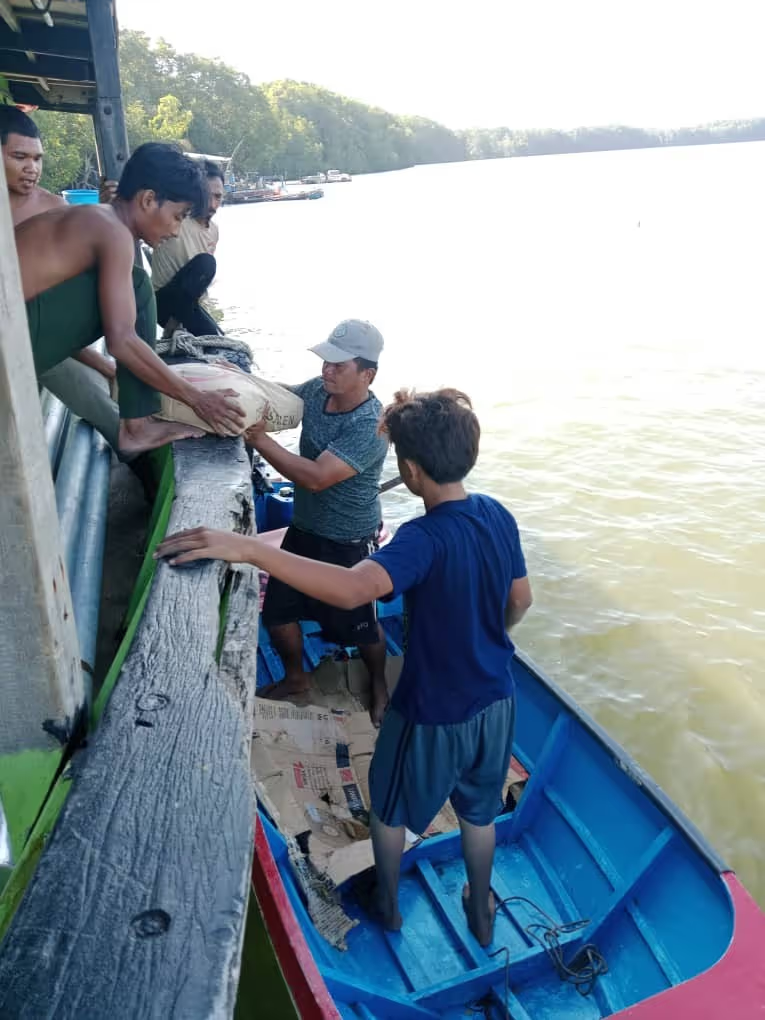
Hear directly from the communities
The project creates increased environmental impact through community-led conservation, with an opportunity to protect 100,000+ acres of forests with watershed protection plans.
more storiesDemo sites
Ulu Papar
Lorem Ipsum is simply dummy text of the printing and typesetting industry. Lorem Ipsum has been the industry's standard dummy text ever since the 1500s, when an unknown printer took a galley of type and scrambled it to make a type specimen book.
Climate findingsLower Kinabatangan
Lorem Ipsum is simply dummy text of the printing and typesetting industry. Lorem Ipsum has been the industry's standard dummy text ever since the 1500s, when an unknown printer took a galley of type and scrambled it to make a type specimen book.
Climate findingsTongod
Lorem Ipsum is simply dummy text of the printing and typesetting industry. Lorem Ipsum has been the industry's standard dummy text ever since the 1500s, when an unknown printer took a galley of type and scrambled it to make a type specimen book.
Climate findings




.png)









